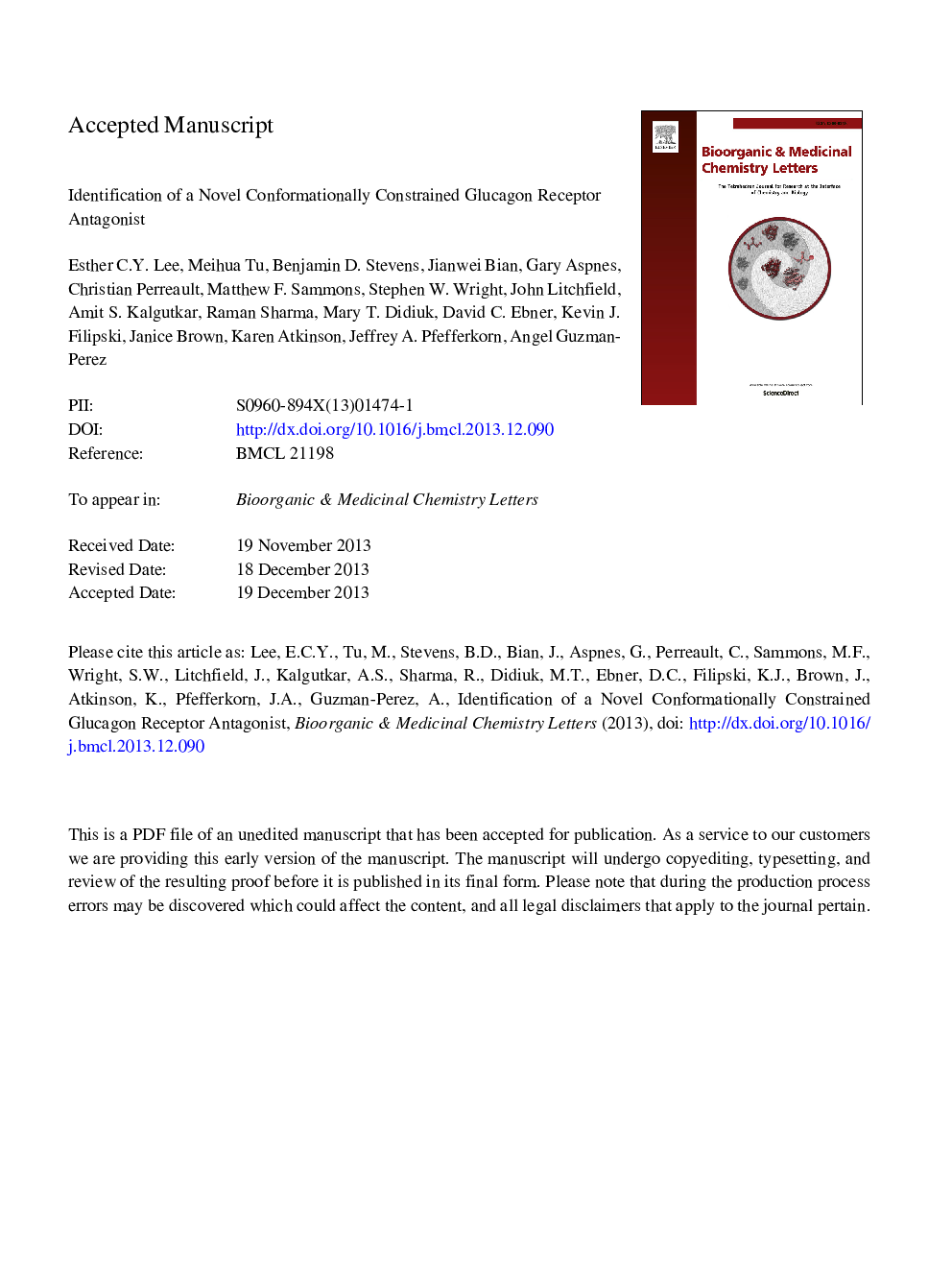| Article ID | Journal | Published Year | Pages | File Type |
|---|---|---|---|---|
| 10594838 | Bioorganic & Medicinal Chemistry Letters | 2014 | 8 Pages |
Abstract
Identification of orally active, small molecule antagonists of the glucagon receptor represents a novel treatment paradigm for the management of type 2 diabetes mellitus. The present work discloses novel glucagon receptor antagonists, identified via conformational constraint of current existing literature antagonists. Optimization of lipophilic ligand efficiency (LLE or LipE) culminated in enantiomers (+)-trans-26 and (â)-trans-27 which exhibit good physicochemical and in vitro drug metabolism profiles. In vivo, significant pharmacokinetic differences were noted with the two enantiomers, which were primarily driven through differences in clearance rates. Enantioselective oxidation by cytochrome P450 was ruled out as a causative factor for pharmacokinetic differences.
Related Topics
Physical Sciences and Engineering
Chemistry
Organic Chemistry
Authors
Esther C.Y. Lee, Meihua Tu, Benjamin D. Stevens, Jianwei Bian, Gary Aspnes, Christian Perreault, Matthew F. Sammons, Stephen W. Wright, John Litchfield, Amit S. Kalgutkar, Raman Sharma, Mary T. Didiuk, David C. Ebner, Kevin J. Filipski, Janice Brown,
